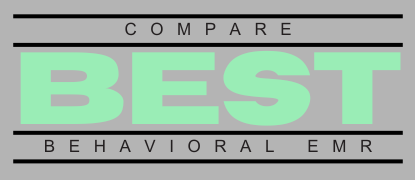
Let’s be honest: managing appointments and scheduling in a behavioral health practice can feel like herding cats—except the cats are calendars, clients, therapists, insurance companies, and a mountain of paperwork. Been there, done that, and trust me, it’s no picnic. Fortunately, a great behavioral health EMR scheduling tool can be a game-changer, streamlining your practice and giving you back your sanity (or at least what’s left of it).
But here’s the kicker: not all EMR scheduling tools are created equal. I’ve tried plenty, from the flashy and complicated to the bare-bones basic. So, how do you sift through the sea of software and find the one that’s right for your behavioral health practice? Let’s dive in.
Why Behavioral Health EMR Scheduling is More Than Just a Calendar
First things first—your EMR scheduling tool isn’t just a glorified Google Calendar. Sure, it keeps track of appointments, but it needs to do a whole lot more. It should handle session notes, manage client waitlists, automate reminders, and even play nicely with billing and insurance processing. Think of it less like a calendar and more like your practice’s air traffic control center. One glitch, and things get messy fast.
Top Features to Look for in a Behavioral Health EMR Scheduling Tool
Based on my own trial and error (and there’s been plenty of error, believe me), here are some key EMR scheduling features that genuinely make life easier:
1. Appointment Reminders and Notifications
- Automated Reminders: Whether through text, email, or phone call, reminders significantly reduce no-shows. According to a study in the Journal of Medical Internet Research, appointment reminders reduced missed appointments by up to 23%.
- Customizable Messaging: You don’t want robotic, generic reminders. Personalize these notifications to sound warm and human. It makes a real difference in client engagement.
2. Waitlist Management
Behavioral health waitlists can get notoriously long. A robust EMR scheduling tool lets you manage waitlists efficiently, automatically filling appointment cancellations and openings. Trust me, nothing beats the feeling when a cancellation spot gets automatically filled without lifting a finger. Sweet, sweet automation!
3. Integration with Clinical Documentation and Billing
Ever had to manually transfer appointment data into clinical notes or billing systems at midnight after a long day? Yeah, not fun. Make sure your EMR scheduling seamlessly integrates with your documentation tools and billing systems. Platforms like TherapyNotes and SimplePractice do this spectacularly, linking appointments directly to client records and billing.
4. Telehealth Integration
If the pandemic taught us anything, it’s that telehealth is here to stay. Your scheduling tool should effortlessly schedule online sessions, send secure links, and ensure HIPAA compliance. For instance, TheraNest and Kareo offer built-in telehealth tools that integrate smoothly into your scheduling workflow.
5. Flexible Provider Scheduling
Clinicians have lives too (shocking, I know!). Your scheduling tool should accommodate flexible provider schedules, manage vacation days, and adjust availability seamlessly. Trust me, happy clinicians mean a happier practice overall.
Questions to Ask Yourself Before Choosing
When you’re evaluating EMR tools, consider the following questions:
- Does it integrate smoothly with my existing practice management software?
- Is it specifically designed for behavioral health practices, or is it a generalized medical EMR?
- How user-friendly is it? Will my clinicians and front-office staff love or loathe it?
- Can it scale as my practice grows?
- How responsive is customer support? (Believe me, you’ll care deeply when something inevitably goes wrong.)
Common Pitfalls to Avoid (Trust Me, I’ve Been There)
In my early days of running a practice, I made the rookie mistake of choosing an EMR purely based on cost. Spoiler alert: cheaper isn’t always better. I ended up spending more time troubleshooting glitches than actually seeing clients. Also, beware of overly complex systems with a million features you’ll never use. Simplicity is your friend.
Don’t Just Take My Word for It—Do Your Homework
It’s essential to research thoroughly before committing. Websites like the American Psychological Association’s tech resources or reviews from peers on platforms like Capterra are great places to start. Additionally, check out industry-specific insights from the Substance Abuse and Mental Health Services Administration (SAMHSA) for guidance on compliance and best practices.
Final Thoughts: Picking the Right Behavioral Health EMR Scheduling Solution
Choosing the right behavioral health EMR scheduling tool doesn’t have to feel overwhelming. Remember, the goal is to find software that makes your life easier, your practice run smoother, and your clients happier. Don’t settle for a one-size-fits-all solution—your practice deserves software designed specifically with behavioral health in mind.
Still feeling unsure? No worries—I’ve been there. Why not get a personalized recommendation? Take advantage of our free practice analysis. Our experts will evaluate your practice’s specific needs and match you with the ideal EMR solution. Easy peasy.
